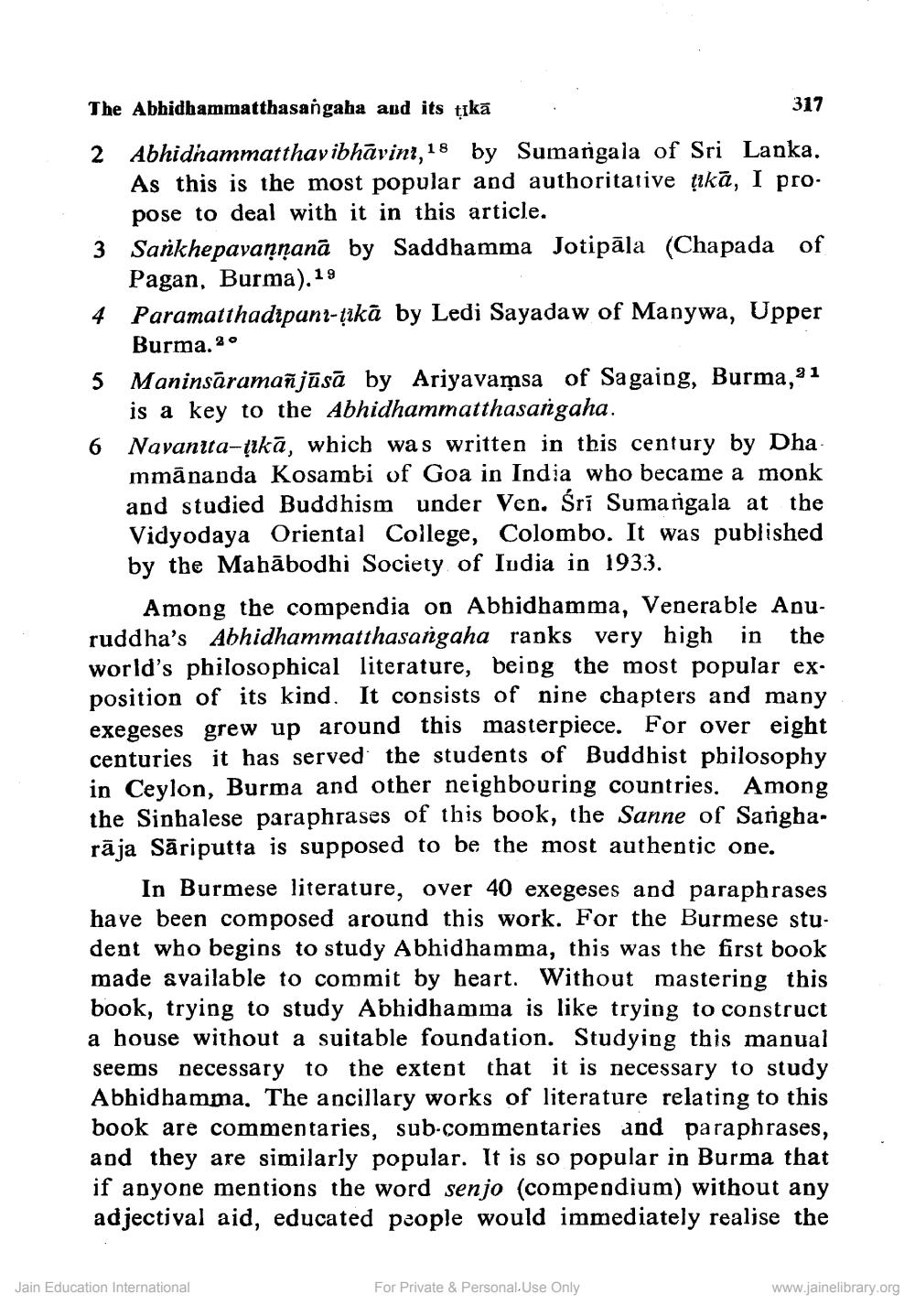________________
The Abhidhammatthasangaba and its tika i
317 2 Abhidhammatthavibhāvini, 18 by Sumarigala of Sri Lanka.
As this is the most popular and authoritative çikā, I pro.
pose to deal with it in this article. 3 Sankhepavaņņanā by Saddhamma Jotipāla (Chapada of
Pagan, Burma). 19 4 Paramatthadipanz-ţikā by Ledi Sayadaw of Manywa, Upper
Burma. 20 5 Maninsāramañjūsā by Ariyavamsa of Sagaing, Burma, 31
is a key to the Abhidhammatthasargaha. 6 Navanita-ţikā, which was written in this century by Dha
mmānanda Kosambi of Goa in India who became a monk and studied Buddhism under Ven. Śrí Sumargala at the Vidyodaya Oriental College, Colombo. It was published by the Mabābodhi Society of Iudia in 1933.
Among the compendia on Abhidhamma, Venerable Anuruddha's Abhidhammatthasangaha ranks very high in the world's philosophical literature, being the most popular ex. position of its kind. It consists of nine chapters and many exegeses grew up around this masterpiece. For over eight centuries it has served the students of Buddhist philosophy in Ceylon, Burma and other neighbouring countries. Among the Sinhalese paraphrases of this book, the Sanne of Sarigharāja Sāriputta is supposed to be the most authentic one.
In Burmese literature, over 40 exegeses and paraphrases have been composed around this work. For the Burmese student who begins to study Abhidhamma, this was the first book made available to commit by heart. Without mastering this book, trying to study Abhidhamma is like trying to construct a house without a suitable foundation. Studying this manual seems necessary to the extent that it is necessary to study Abhidhamma. The ancillary works of literature relating to this book are commentaries, sub-commentaries and paraphrases, and they are similarly popular. It is so popular in Burma that if anyone mentions the word senjo (compendium) without any adjectival aid, educated people would immediately realise the
Jain Education International
For Private & Personal Use Only
www.jainelibrary.org




